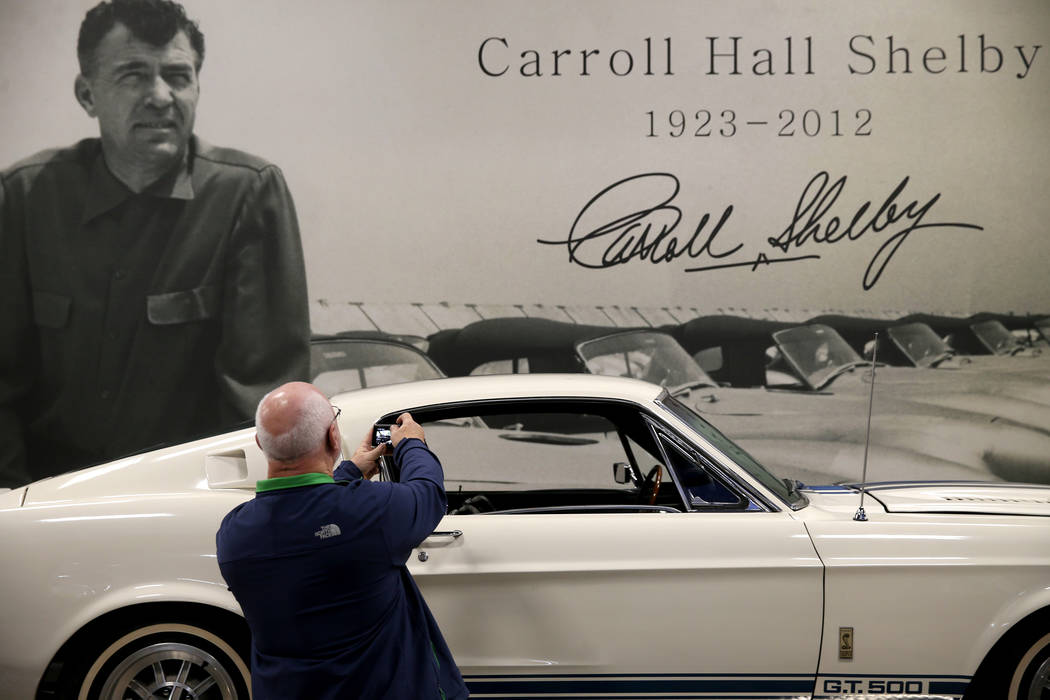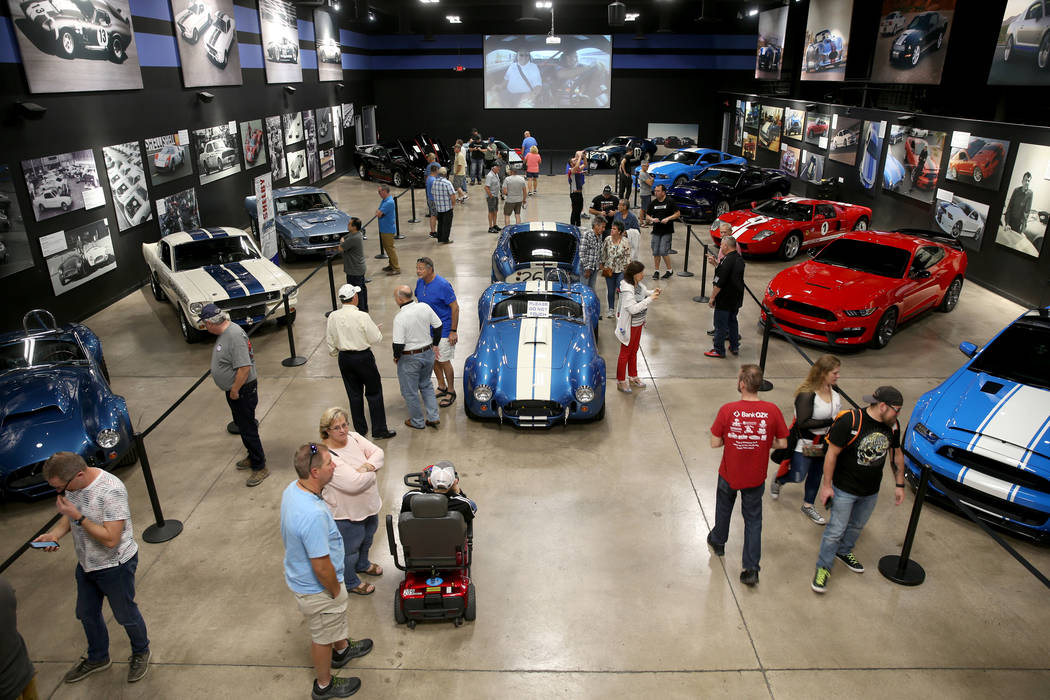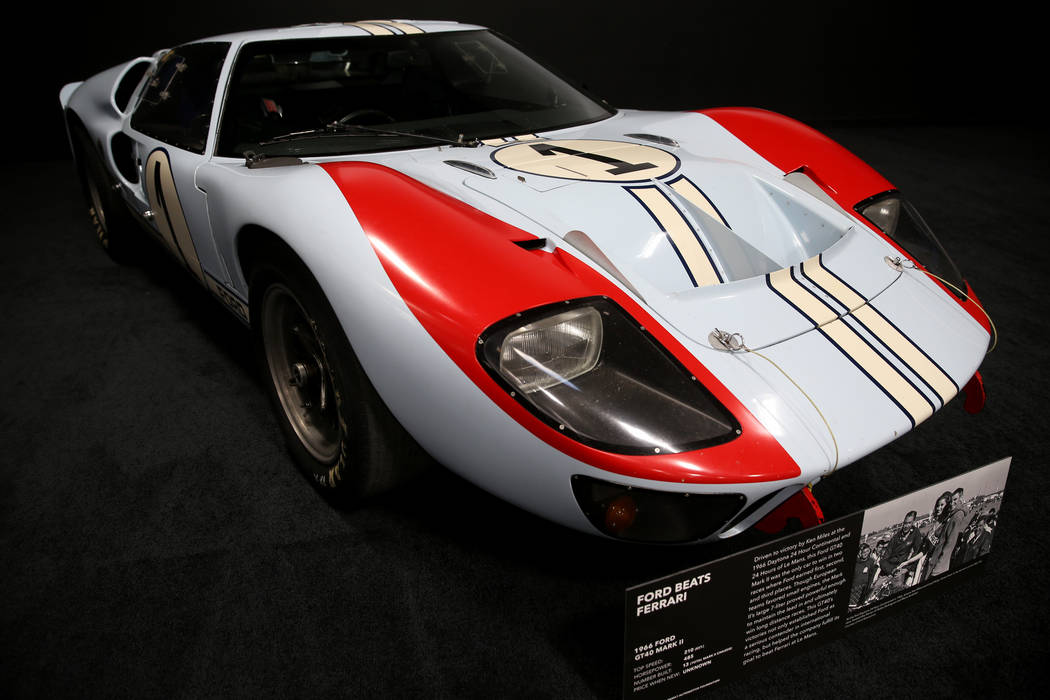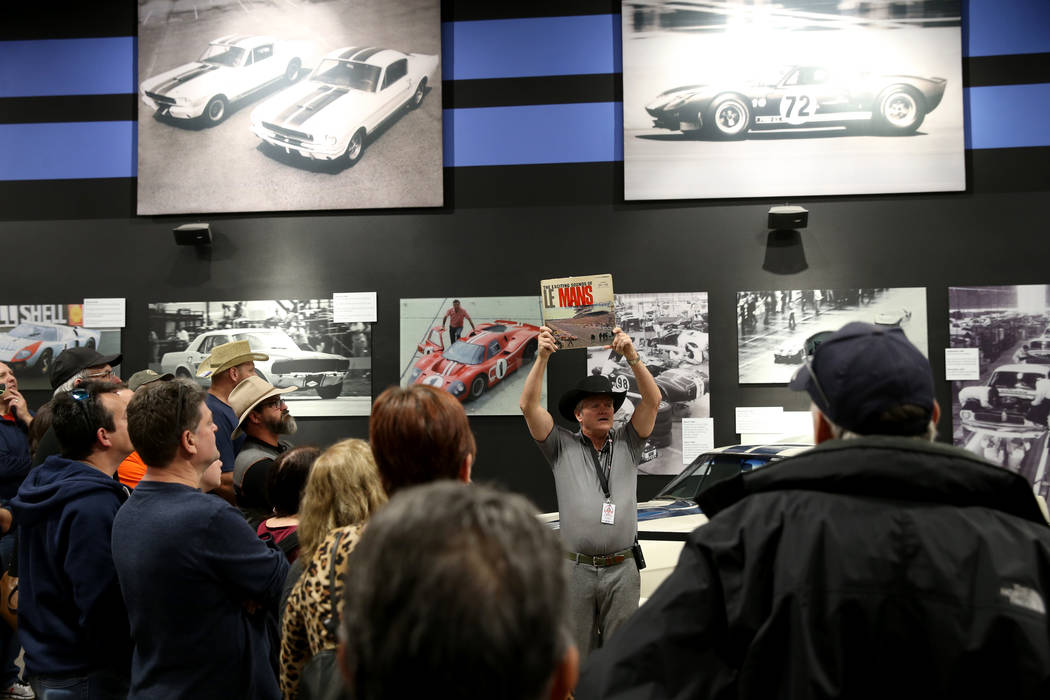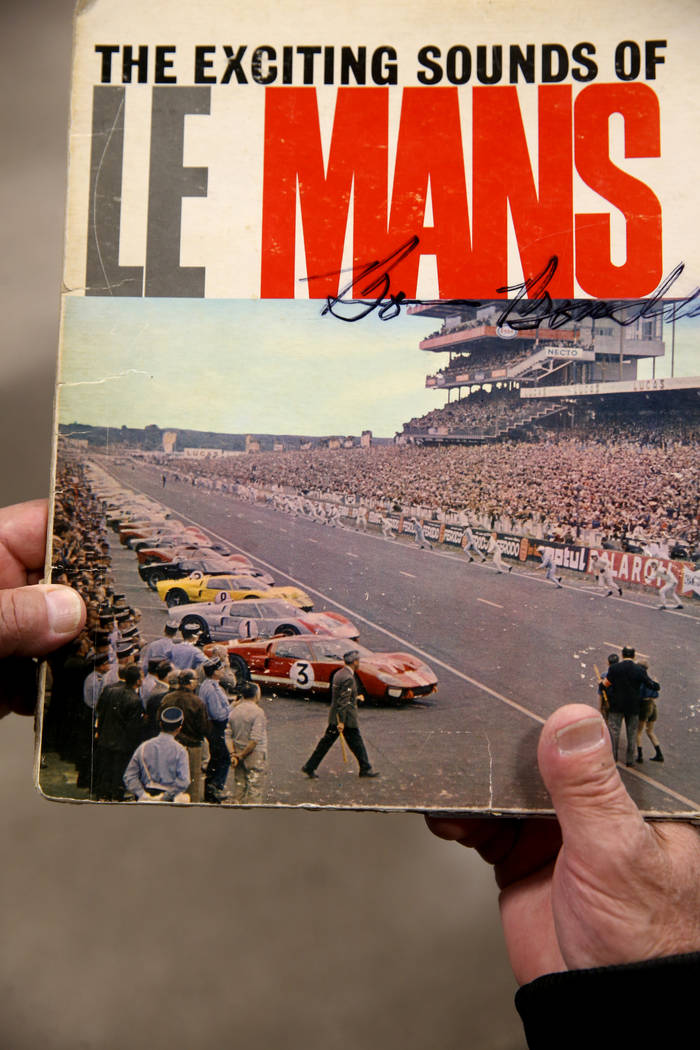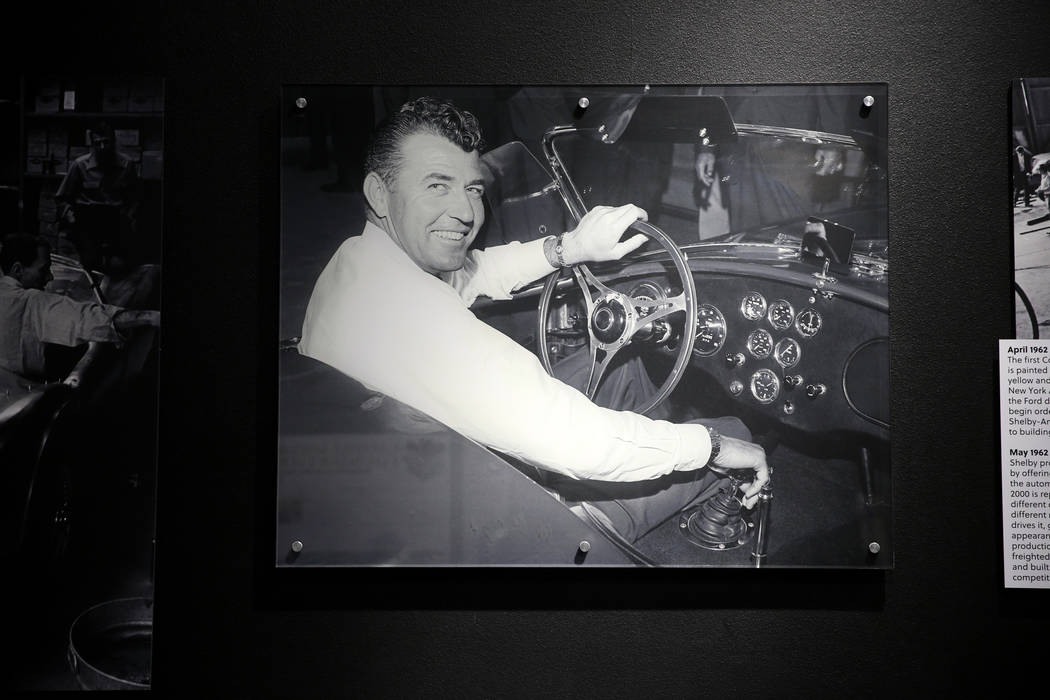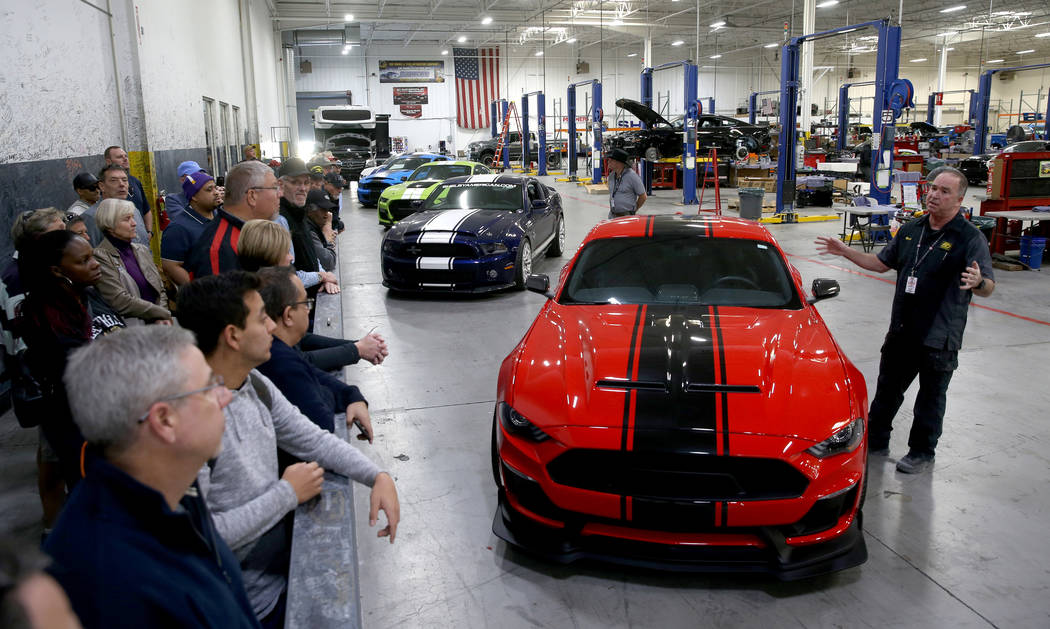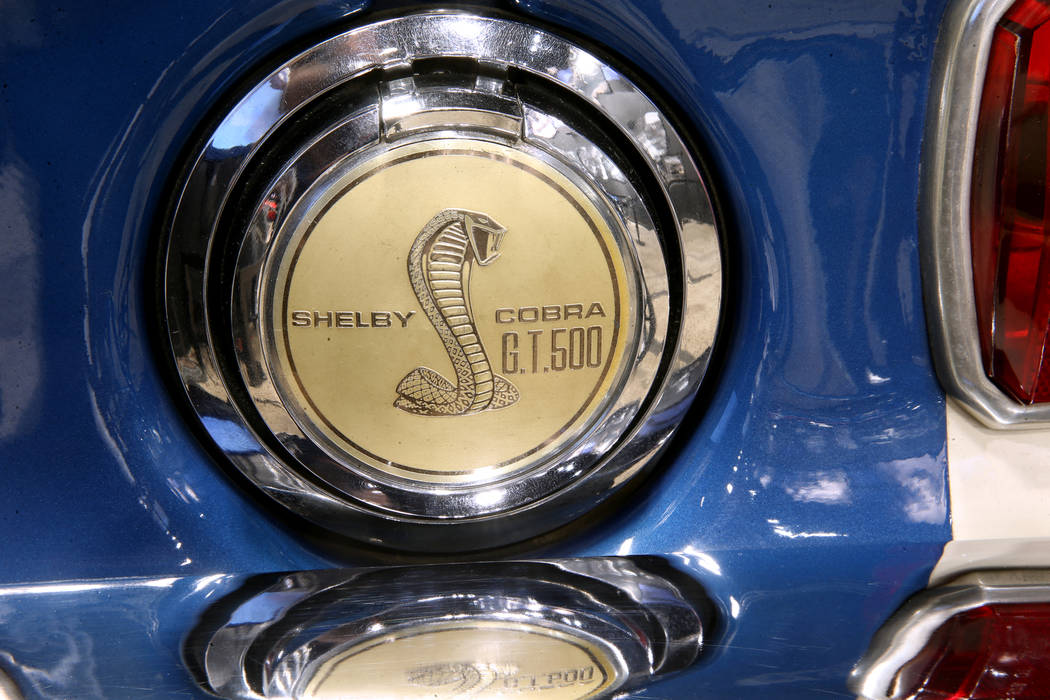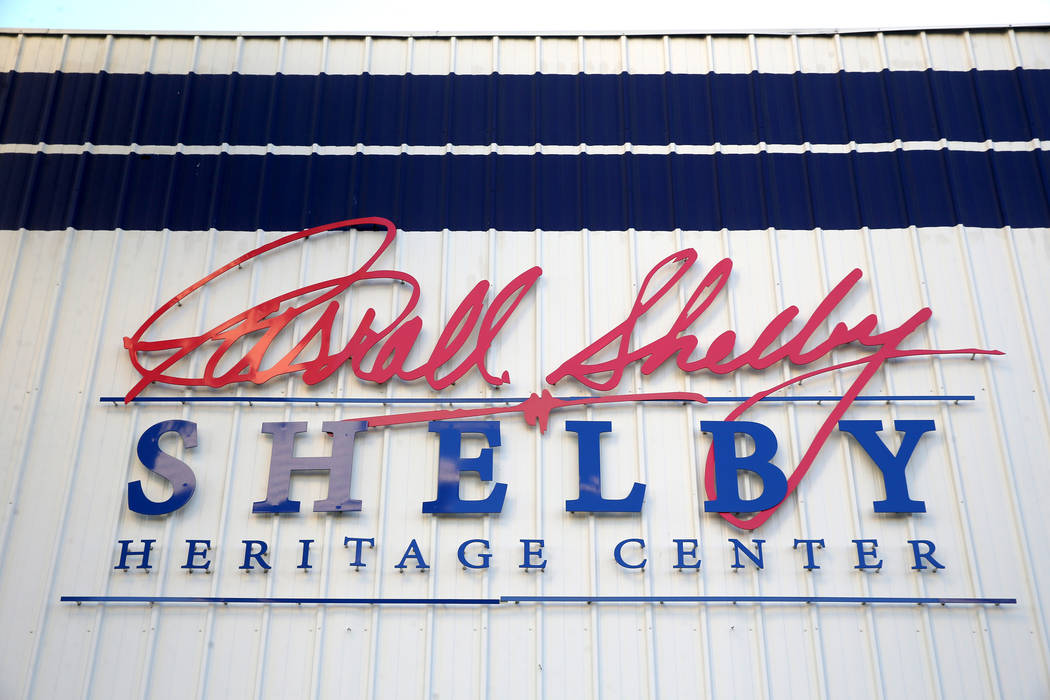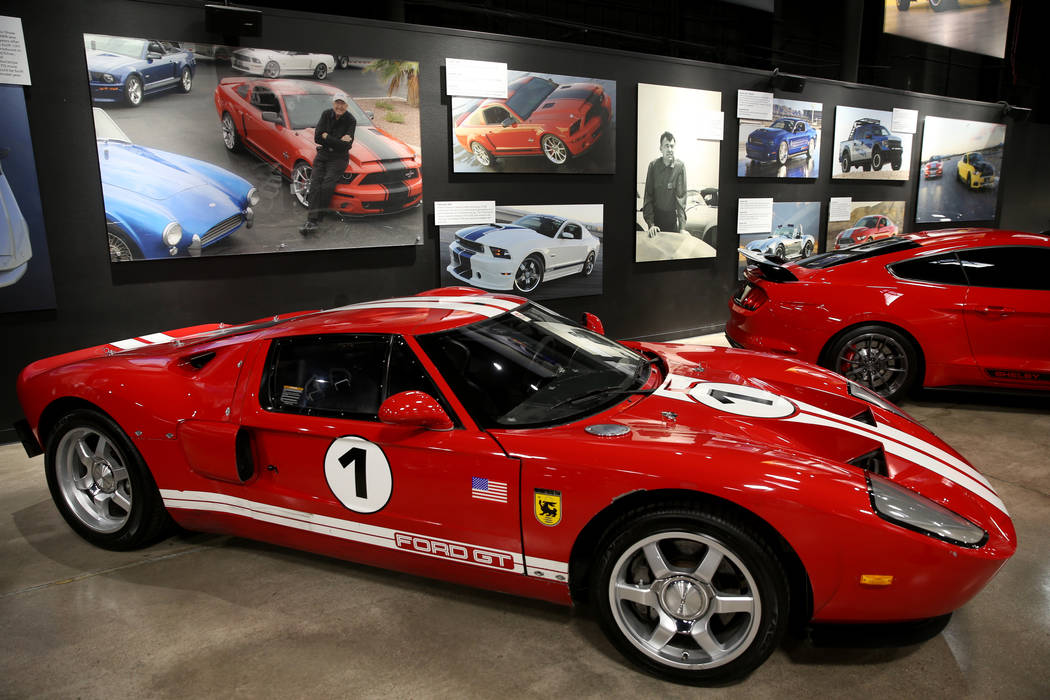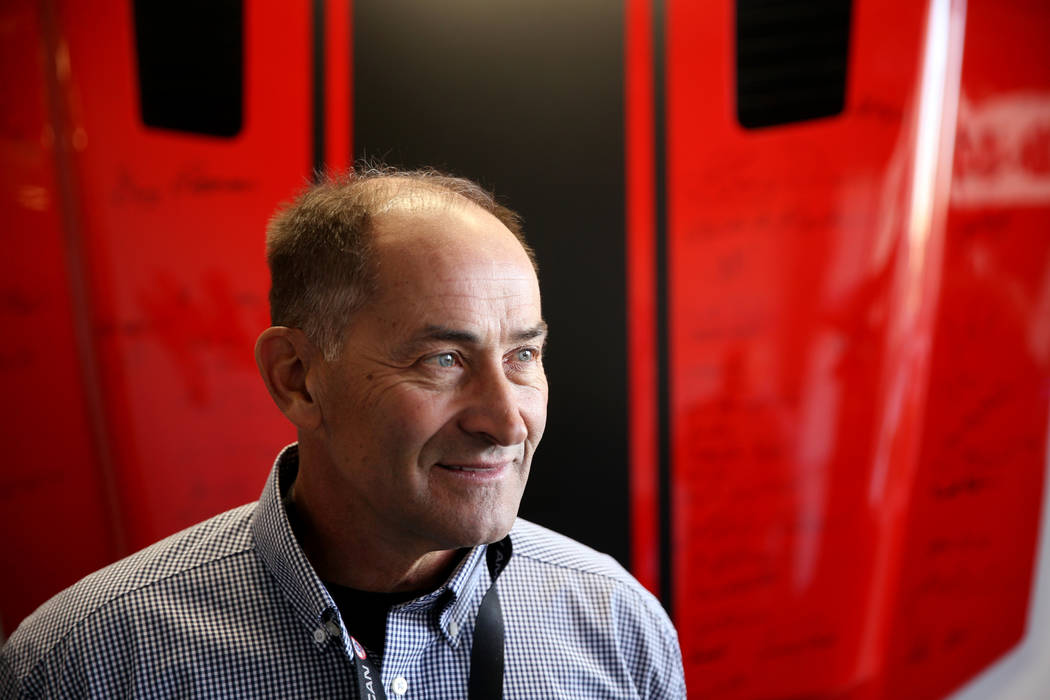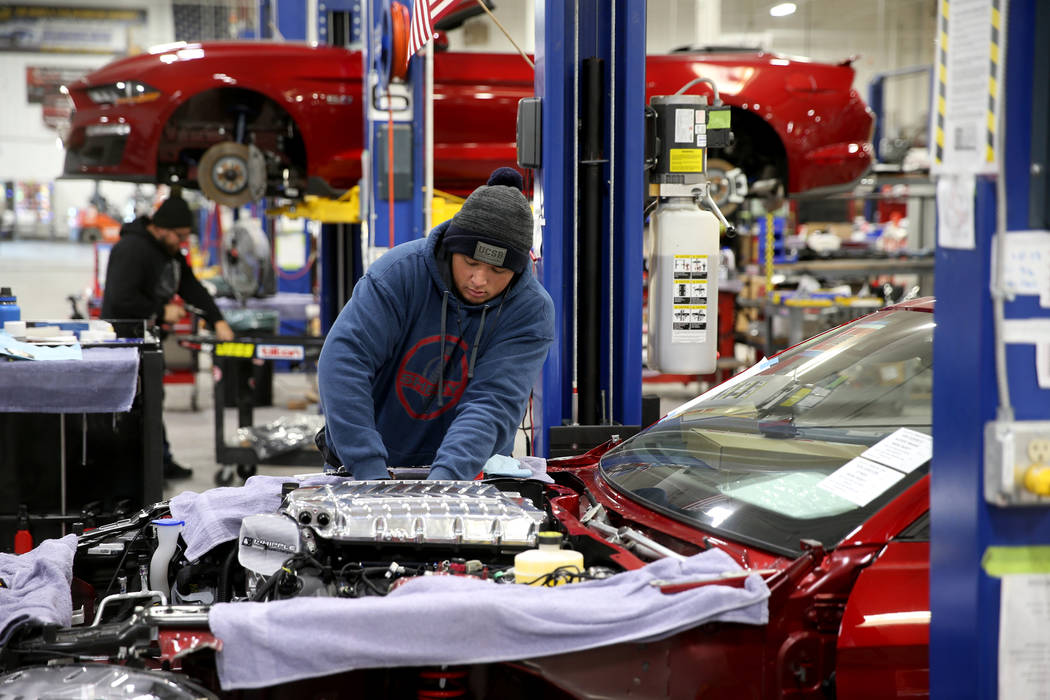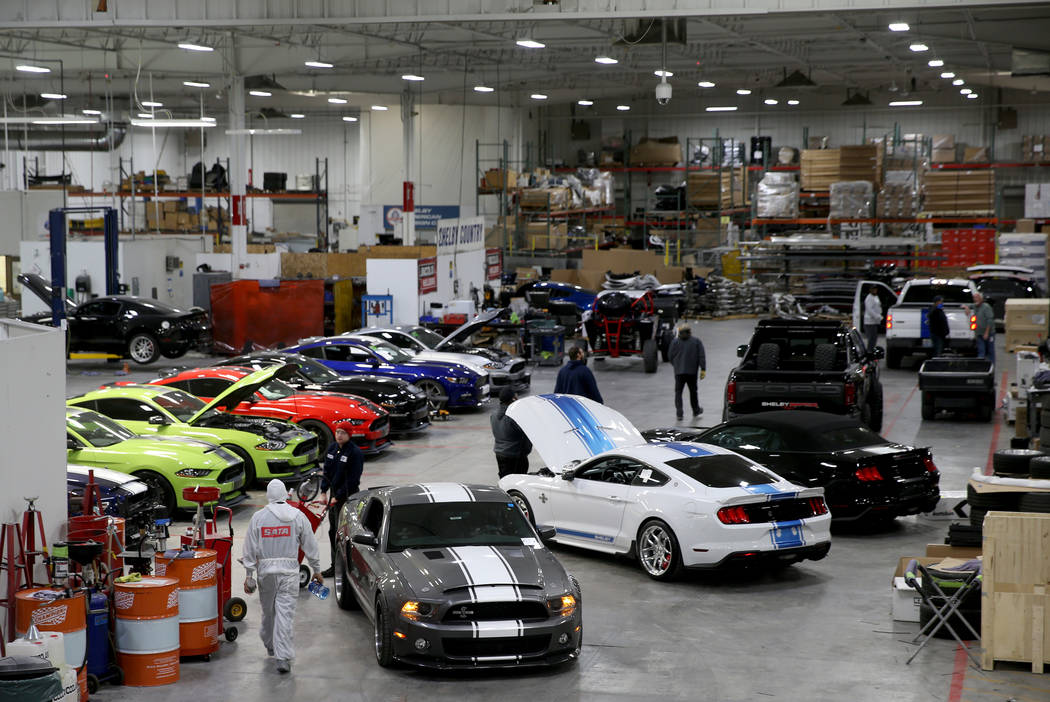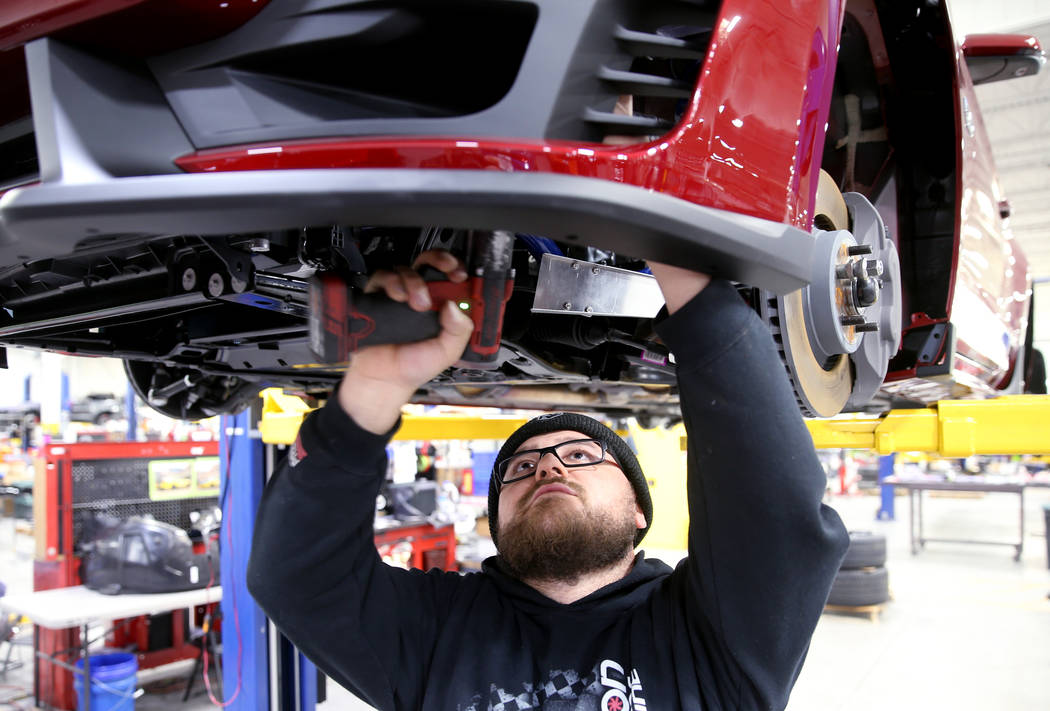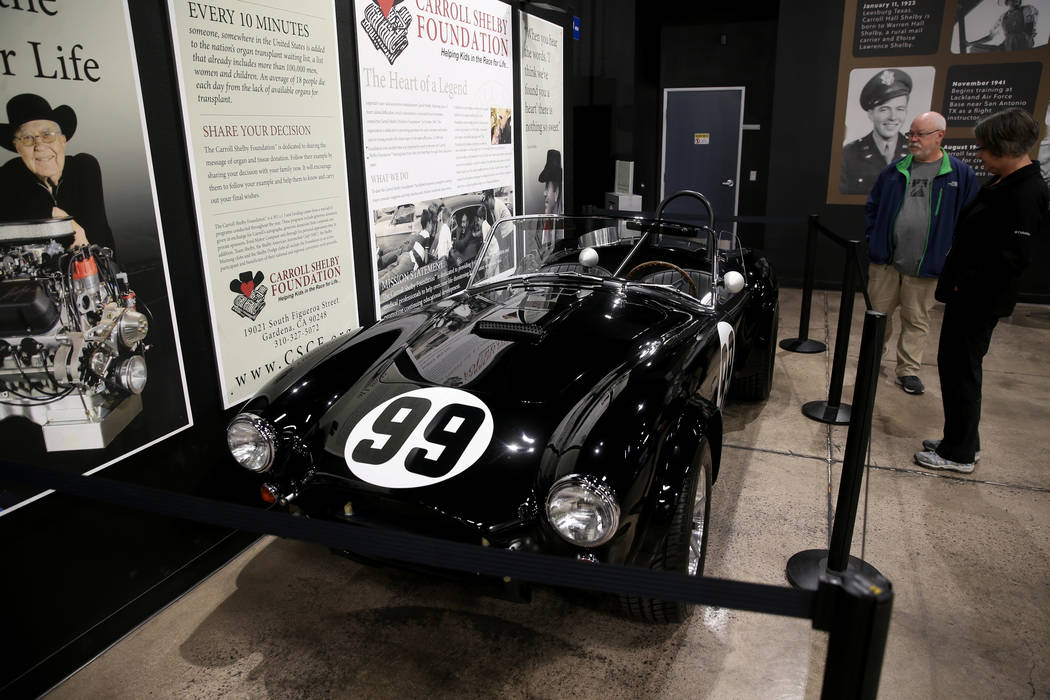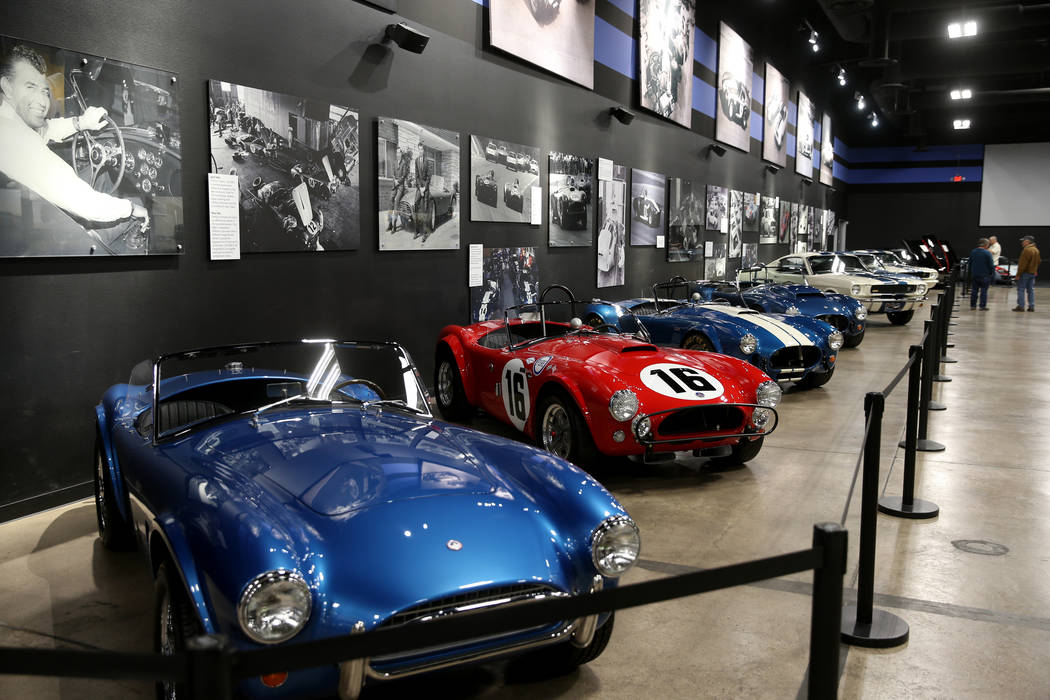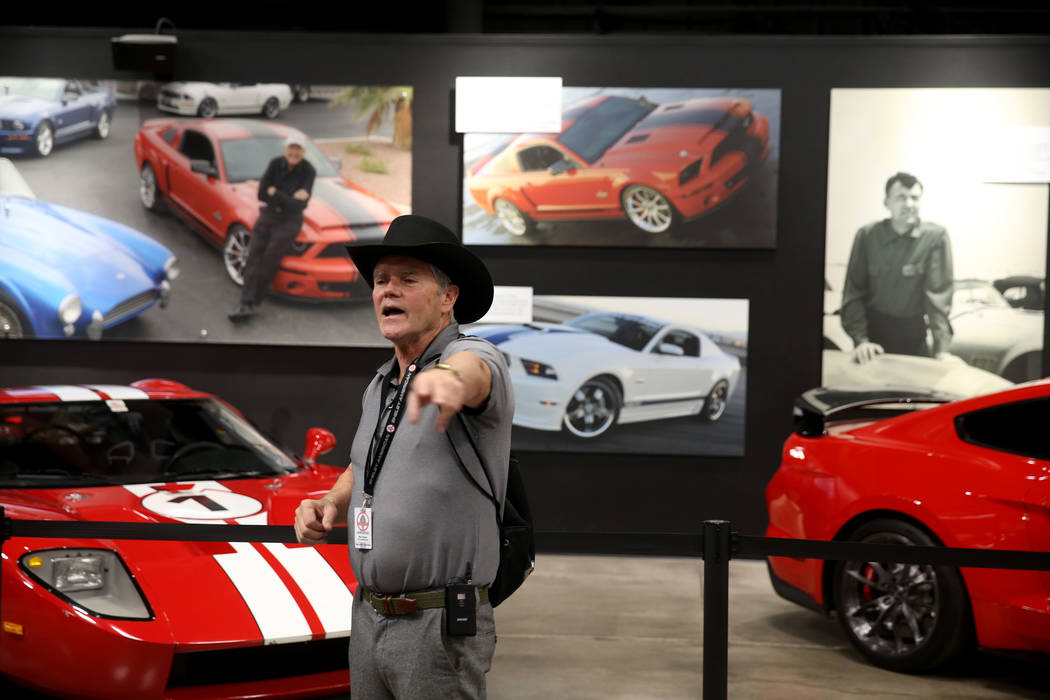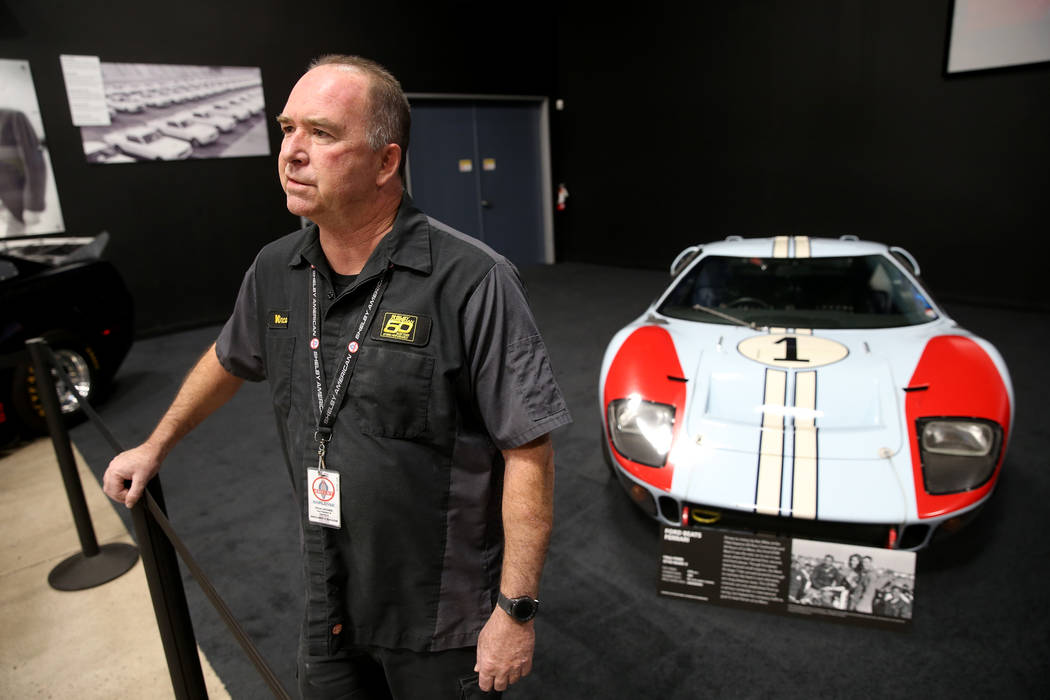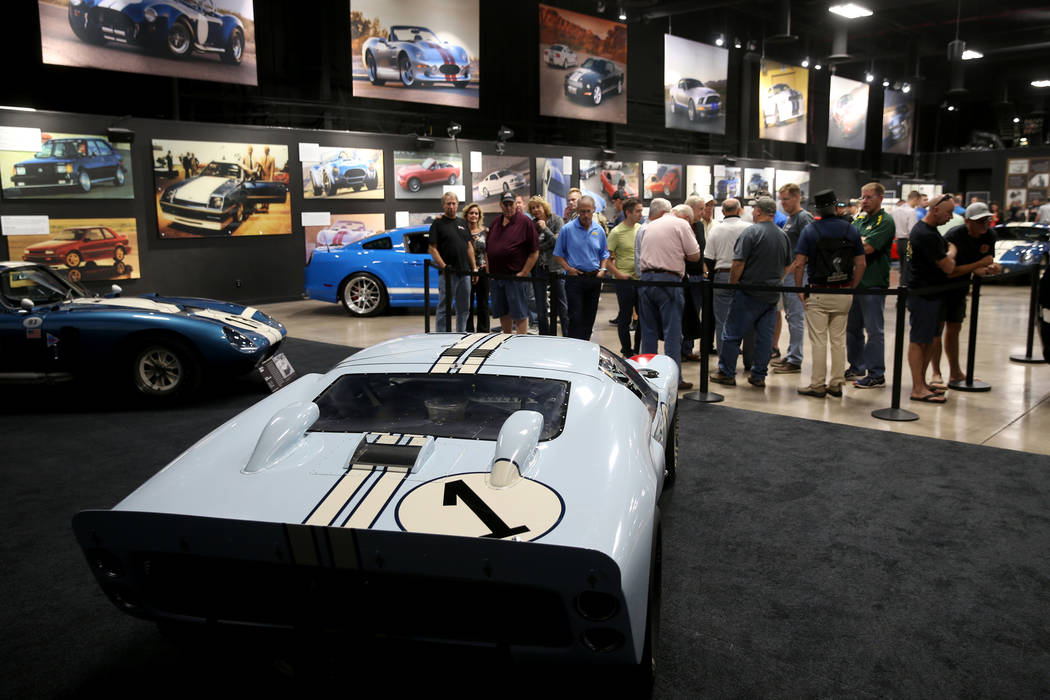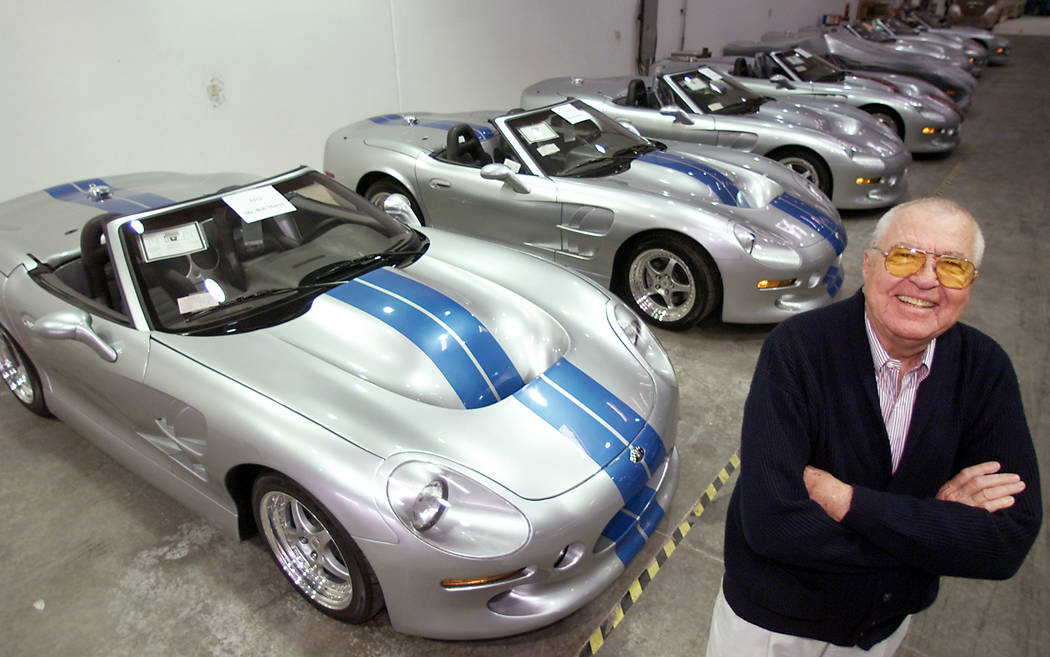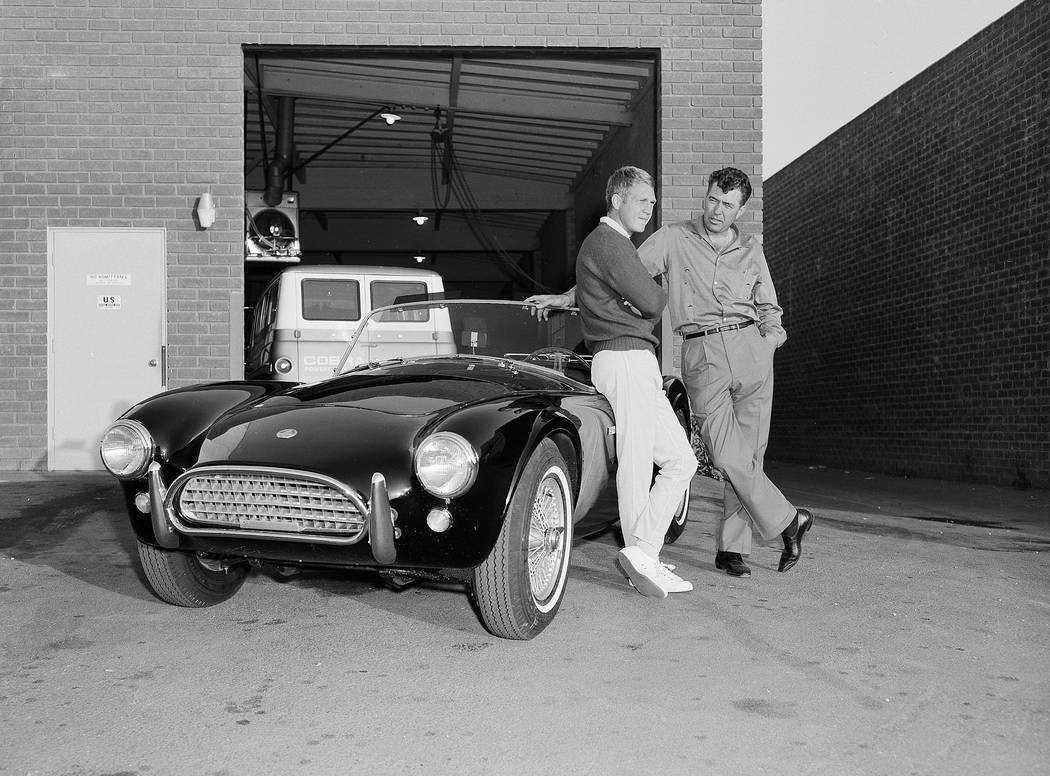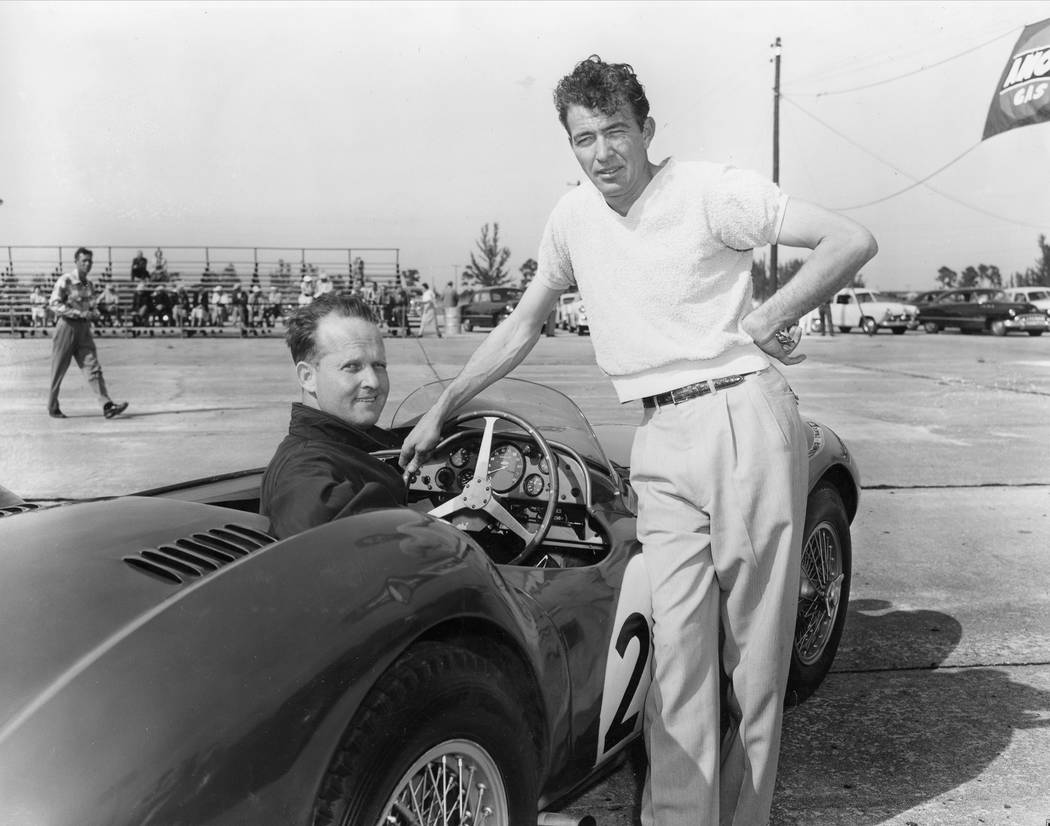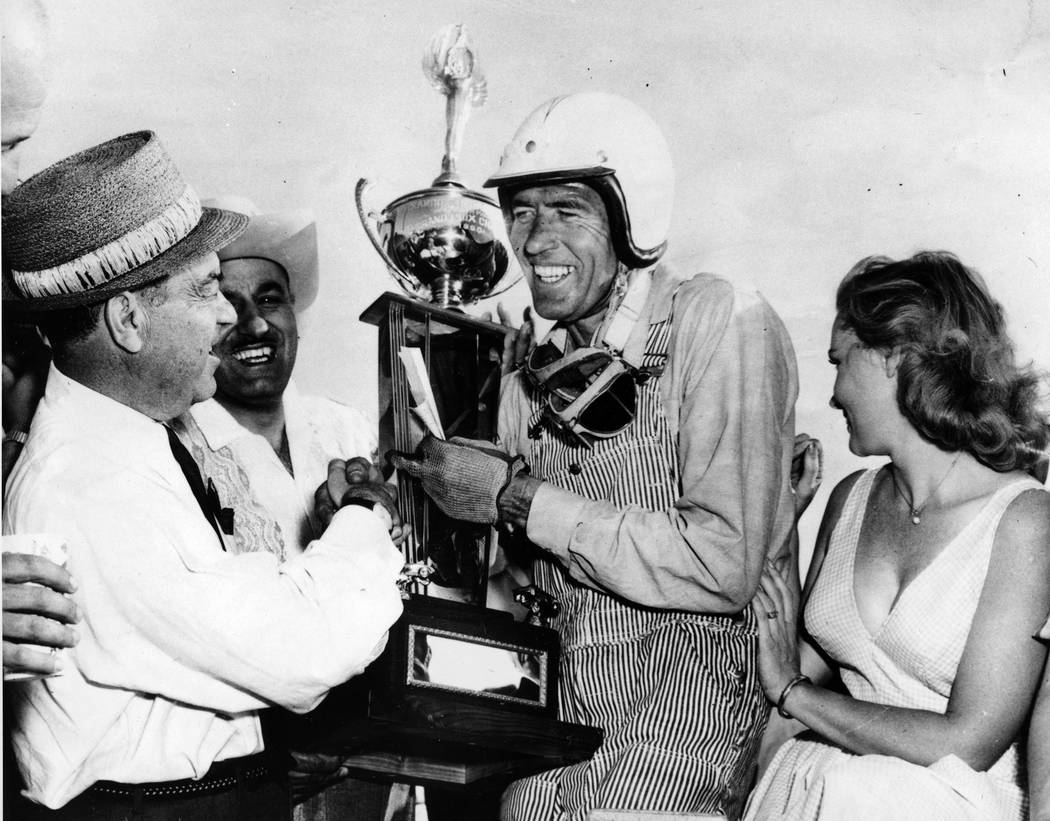‘Ford v Ferrari’ legend Carroll Shelby had a special connection to Las Vegas
Carroll Shelby’s heart was in Las Vegas long before the racing legend consolidated his automotive empire and moved it to the valley.
By 1990, the coronary problems that forced Shelby to stop driving competitively 30 years before had done what few racers ever could: They caught up with him. Shelby was dying, and he probably wouldn’t have survived the year had a gambler not dropped dead of a cerebral hemorrhage near a local craps table.
That donor heart gave Shelby, the Texas native portrayed by Matt Damon in the film “Ford v Ferrari,” a new lease on life. In 1995, he signed on as the first tenant of the industrial park at the under-construction Las Vegas Motor Speedway and laid the groundwork for a local legacy.
“I’ve had a lot of thrills in my life — winning championships, driving race cars, building cars that won a championship,” he told the Las Vegas Review-Journal that year. “I guess outside of when I woke up after my heart transplant, I haven’t had a thrill that compares with moving up here and putting the things together that we’re looking forward to doing.”
‘Perfect timing’
As acclaimed as Shelby was as a driver — he became just the third American to win the grueling endurance test known as the 24 Hours of Le Mans in 1959 and twice was named Sports Illustrated’s driver of the year — he was even more revered for his second career as a car designer (third career, if you count his failed stint as a chicken farmer).
The Shelby Cobra. The Daytona Coupe. The Mustang GT350. The Ford GT40 Mark II, whose creation for the 1966 race at Le Mans is the subject of “Ford v Ferrari.” Any one of those could have landed him on an automotive version of Mount Rushmore.
When Richie Clyne was putting together the speedway, Circus Circus executive Mel Larson knew he needed high-profile tenants. Larson also knew his friend Shelby was looking for a new home for his businesses.
“It was kind of perfect timing for both of us,” Clyne said of the move that gave the speedway immediate clout and legitimacy.
Racing and rehabilitating
Shelby didn’t wait for the speedway’s opening in 1996. Following the lead of Clyne, who owned the Auto Collections at the Imperial Palace, Shelby set up shop at the Southern Desert Correctional Center at Indian Springs.
For several years, Clyne had been sending his classic cars to the prison for restoration. If the inmates were good enough to work on those priceless autos, Shelby reasoned, they could build some for him. Before long, they were producing continuations of the 1965 Cobra 427 S/C.
“It’s a wonderful project, because not only are you teaching these people a profession as they’re being rehabilitated, you’re preparing them for when they are released,” Shelby said during a 1995 visit to the prison. “It’s just as good or better than anything that I’ve seen in a restoration shop.”
After receiving that donor heart — he also would receive a kidney in 1996 from his son Michael — Shelby wanted to give back, said Gary Patterson, president of Shelby American. The prison program was one way to do so.
Noting that Ken Miles wasn’t a big name at the time — the man who helped develop the GT40 and drove it at Le Mans is portrayed in the film by Christian Bale as a journeyman driver and mechanic — Patterson said Shelby was only concerned with talent.
“Carroll Shelby would give you that opportunity. He didn’t care what your name was.”
Some of those inmates, who have since been released, work for Shelby American to this day.
‘A mind of his own’
Two of the key factors in Shelby’s decision to move his businesses to Las Vegas were being at the speedway and having almost unlimited access to it. When he wanted to test-drive one of his creations, little could stand in his way.
“I think as long as there was nobody on that piece of the property that he wanted to be on, he would just do it himself,” recalled Chris Powell, the speedway’s president since 1998. “That was Carroll Shelby. He had a mind of his own.”
If there was something else going on at the track when he wanted to drive, Powell would get an earful of some pretty colorful language.
“He could be brash and acerbic at times,” Powell admitted, “but he also was quite a gentleman and just a joy to spend time around.”
Patterson joined Shelby American in 1996 and worked his way up from materials manager. One of his main responsibilities along the way was as a test driver. He also rode along when Shelby was behind the wheel — even in the legend’s later years.
“He still wanted to drive, but he had macular degeneration, so he couldn’t see well. And he used to run into things, so we tried to not do as much of that,” Patterson said. “When you’re out on the track and he is driving and he has to say, ‘You need to tell me when to turn’? It’s a little bit scary.”
And how fast would they be traveling during one of those requests?
“Oh, he could be going over a hundred.”
Big but not big-time
Shelby had a home in Las Vegas, but he spent much of his time in the exclusive Los Angeles enclave of Bel-Air. Still, he wasn’t caught up in the trappings of wealth and celebrity, according to those who knew him.
“You knew you were in the presence of greatness, and I think he knew that you knew that you were in the presence of greatness. But he never seemed to be boastful about his place in the automotive world,” Powell said. “He could refer to Enzo Ferrari as ‘Enzo,’ and you didn’t feel like Carroll Shelby was trying to big-time you. That’s what he called the guy.”
Shelby was close friends with billionaires, including hotel magnate Barron Hilton and Bruton Smith, who has owned Las Vegas Motor Speedway since 1998.
“Yet, if you sat with him in a car and you’re going somewhere, he’d be talking about Taco Bell or the Dollar Store,” Patterson said. “We’d all stop at Burger King. Didn’t matter. Didn’t care.”
As for his status within the industry, Patterson says, “He didn’t respect you if you looked at the icon. He respected you if you gave him your honest opinion and you were straightforward with him and you could perform. … If you went, ‘Ooooh, it’s Carroll Shelby,’ he’d run over you like a freight train, and he’d enjoy it.”
Las Vegas legacy
Shelby died May 10, 2012. The doctor’s prognosis that he had five years to live when he gave up racing in 1960 was off by a mere 47 years.
“Carroll was one of the best friends I ever had,” Smith, executive chairman of Speedway Motorsports, recalled in an email. “He was known all over the world as an icon in the automotive industry and one of the greatest names in the history of motorsports. … I admired him a great deal and miss him greatly as a friend and a business partner.”
The year after Shelby died, Shelby American moved to its current home, 6405 Ensworth St., across from Town Square. The company builds authentic continuation Cobras, and it will Shelby up your Ford Mustang or turn your GT500 into a Super Snake with packages costing up to $250,000. Six or seven years ago, Shelby American didn’t build trucks. Now, according to Patterson, trucks including the Shelby F-150 and Shelby Raptor make up 75 percent of the company’s business.
The attached Shelby Heritage Center helps visitors — roughly 160,000 each year — step back in time with some of the most important cars related to Shelby’s career. Among the permanent highlights is the only 1967 Ford Shelby Mustang GT500 Super Snake ever produced; it sold at auction this year for $2.2 million. The GT40 that inspired “Ford v Ferrari” is on loan through Wednesday.
“Any automotive enthusiast undeniably has an appreciation for this place, for these cars,” Ray Crawford of Rochester, New York, said during a weekday morning visit to the museum. Crawford recently purchased his first Mustang after having wanted one for 50 years. His wife, Barb, said she got emotional when confronted with “the history of them and how beautiful they are and the style.” When they stopped in Las Vegas on their way to Arizona, Shelby American was the one attraction they visited.
“He was good for the community,” said Clyne, a 2004 inductee into the Southern Nevada Sports Hall of Fame, by way of summing up Carroll Shelby’s local legacy. “I travel around the world, and car people say, ‘You’re from Las Vegas. Are you near Shelby? Have you seen Shelby’s facility?’ ”
Contact Christopher Lawrence at clawrence@reviewjournal.com or 702-380-4567. Follow @life_onthecouch on Twitter.
Touring Shelby's cars
The Shelby Heritage Center, 6405 Ensworth St., houses a number of cars that were important to the career of Carroll Shelby.
The free attraction is open 9 a.m.-6 p.m. weekdays, 7 a.m.-6 p.m. Saturdays and 10 a.m.-5 p.m. Sundays.
Free guided tours are offered at 10:30 a.m. and 1:30 p.m. weekdays and 10:30 a.m. Saturdays.
The Ford GT40 Mark II, whose creation for the 1966 race at Le Mans is the subject of "Ford v Ferrari," is on display through Wednesday.



